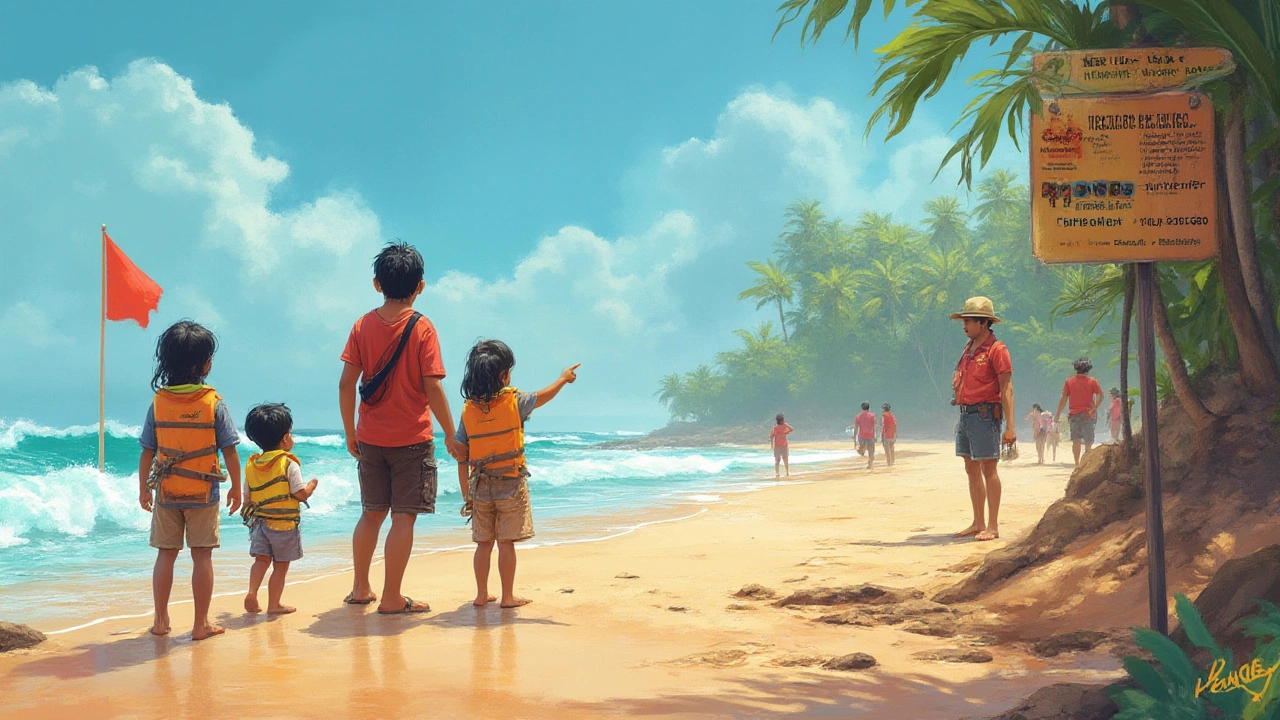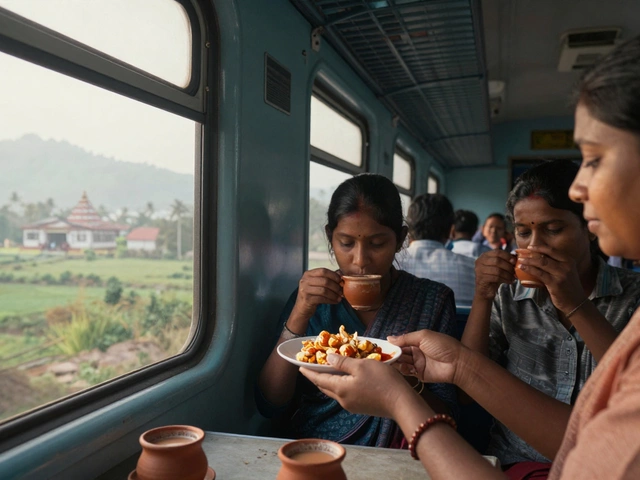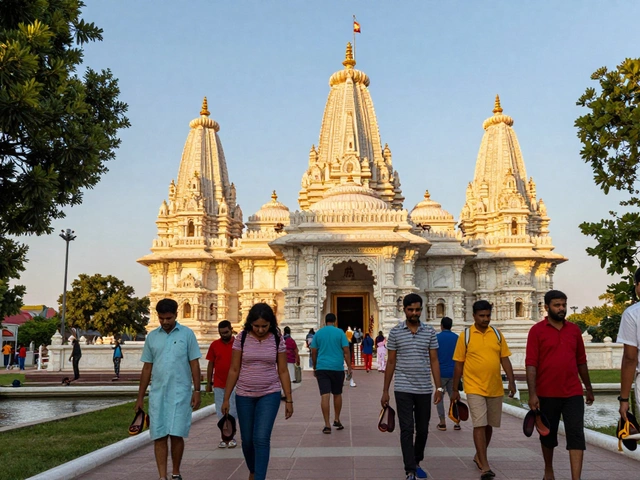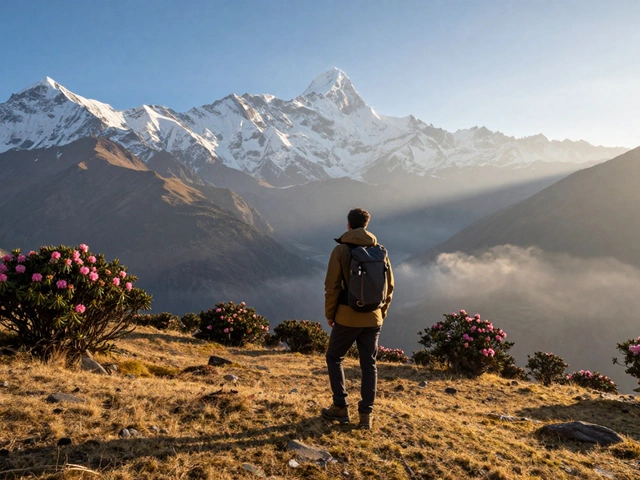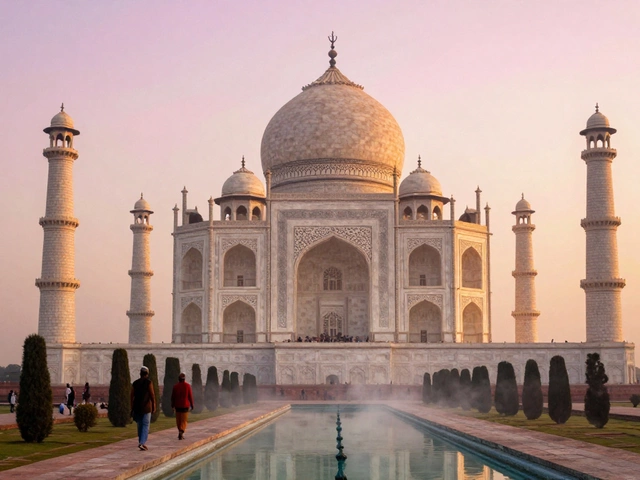If you’ve dreamed scrolling through sunrise beach pics, picturing yourself wading into warm turquoise waves somewhere along India’s endless coastline, you’ve probably also wondered: is it actually safe to swim here? Beach life in India looks as stunning as anywhere—curves of golden sand, dramatic cliffs, fishermen pushing colorful boats into the waves. But safety? Not everyone talks about the real life-and-death details, from hidden riptides to banned swimming zones, and why locals sometimes stay on the sand even in 40°C heat. Safety isn’t just about sharks or stings—although you’ll hear myths about both. It’s about tides, pollution, and some perfectly logical rules that vacationers sometimes miss. So, are the temptingly wild Indian seas a joyful adventure or just a social media fantasy? Let’s dig into what you need to know before running for the surf.
How Safe Is Swimming in Indian Seas? Real Dangers and Practical Truths
India has more than 7,500 kilometers of coastline. You’ll find dramatically different experiences across this vast stretch, from the mild waves of Kerala to the wild, roaring shores of the Bay of Bengal in Odisha or West Bengal. Spoiler alert: the answer to “is it safe?” really depends where you are. In Goa, beach resorts practically spill out onto sand that’s postcard-perfect and crowded. Here, lifeguards whistle at the first sign of mischief, and there are flag systems to tell swimmers where it’s safe. Meanwhile, along parts of the east coast, you’ll barely spot a soul in the surf.
First up, the basic dangers: unpredictable currents, strong undercurrents (called “rip currents” locally), wild tides, sudden drop-offs, sharp rocks under shallow water, pollution levels that would shock most travelers, and fast-changing weather during monsoon months. According to the National Crime Records Bureau (NCRB), accidental drowning has been one of the top causes of accidental deaths in several coastal states, with Maharashtra, West Bengal, Odisha, and Tamil Nadu reporting frequent incidents—often on unguarded beaches. On some busy beaches like Chennai’s Marina or Mumbai’s Juhu, local authorities have even put out statistics showing dozens of drownings every year, especially during weekends or public holidays.
| Coastal State | Average Annual Drowning Incidents (Recent Data) | Popular Beaches with Lifeguard Presence |
|---|---|---|
| Goa | ~15-25 | Baga, Calangute, Colva, Palolem |
| Maharashtra | ~50-100 | Juhu, Girgaum, Aksa, Alibaug |
| Tamil Nadu | ~30-60 | Marina, Elliot's, Mahabalipuram |
| Odisha | ~20-40 | Puri, Chandrabhaga |
Monsoon season (roughly June–September, but timing shifts with geography), is notorious for rough seas and impossible swimming conditions—strong winds, choppy waves, and dangerous undercurrents. Red flags typically fly high during these months, but even local kids sometimes underestimate just how swift the sea can turn. If you’re planning to swim, this period is a definite no-go almost everywhere, even for strong swimmers. Some beaches even close fully to the public for safety.
Let’s talk animals, because rumors get wild. Yes, there are jellyfish, and during certain seasons, you might run into swarms—especially in Goa, Kerala, or along the east coast after storms. Bluebottle stings are common but rarely life-threatening. Sharks? You’ll hear stories at every chai stall, but fatal attacks are extremely rare—far more likely at remote or estuarine stretches, and typically not something even locals fear. But keep an eye out for urchins, crabs, and sharp coral, especially if you’re exploring rocky pools or less-developed beaches.
Now the hot-button issue: water quality. India’s rapid, messy coastal development means some popular beaches have pollution levels that would leave most Westerners gasping—and not from the sea breeze. In 2024, the Central Pollution Control Board listed dozens of urban beaches as “not fit for bathing” after routine tests. Many big-city stretches—Mumbai, Chennai, Visakhapatnam—face daily threats from untreated sewage, plastic waste, and even chemical run-off. The story is better at less urbanized spots like Gokarna, some cleaner Goa beaches, or less-traveled Andaman islands. But don’t expect automatic paradise: check for posted water quality ratings if they’re available (you’ll sometimes see them online for major Goa sites), and ask locals if the beach is safe for swimming that day.
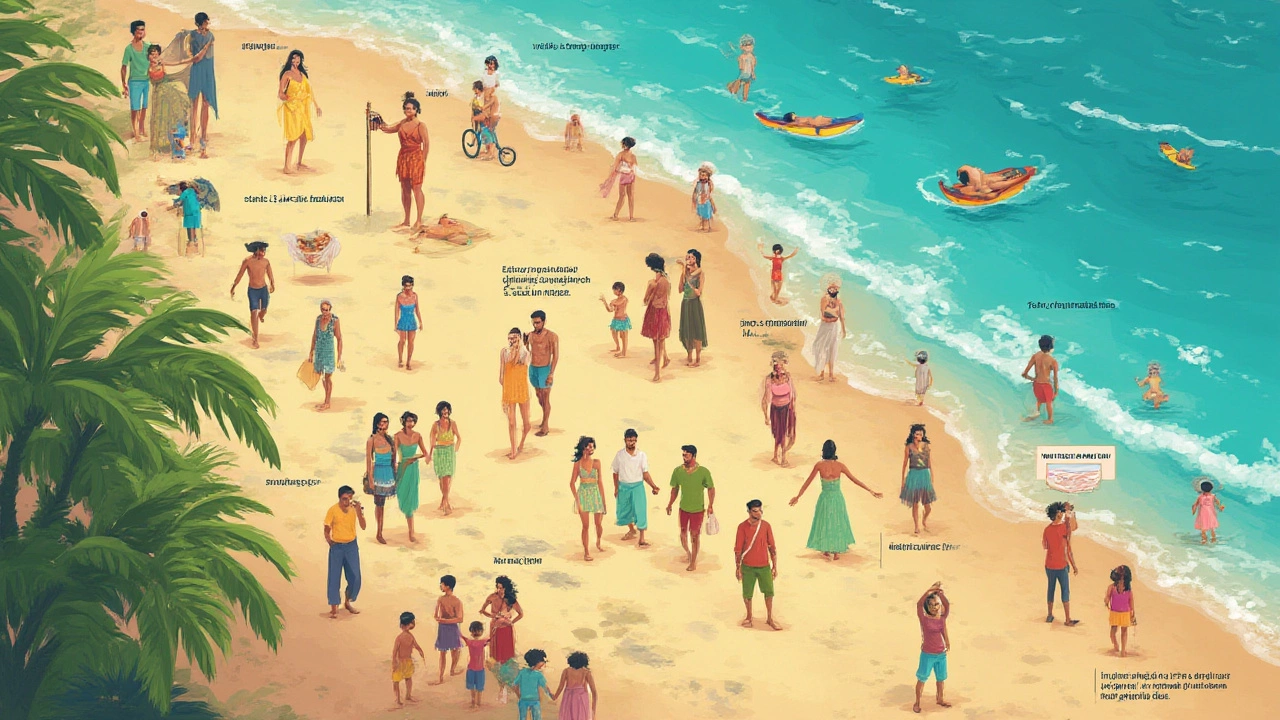
Picking The Right Beach: The Safest and Cleanest Spots to Swim
Ready to wade in? Choosing the right beach is crucial. Some Indian beaches are practically designed for safe sea swimming. These are the places with visible lifeguards (often in bright yellow-red uniforms), safety flags, shallow and calm water sections, and amenities like shower stalls and warning signs. Tourists tend to cluster here—for good reason! Beyond fun, lifeguards at popular Goa beaches and some Kerala stretches are now fully trained and equipped, often running information booths where you can ask about tides, warnings, or how to avoid injuries.
If you want picturesque, Instagrammable swimming without the crowds, try the southern tip in Kerala—Kovalam and Varkala beaches stay cleaner and more organized than most big-city rivals. Kovalam’s Lighthouse Beach, especially, has lifeguards year-round and tends to get high marks for water safety. In Goa, Palolem has gentle surf, reliable safety crews, and fewer parties than Baga or Anjuna. Cleanliness is another win: both these states made the cut in the Blue Flag-certified beaches—an international label awarded for water purity, safety, and eco-friendliness. As of 2025, India boasts 12 Blue Flag beaches, including Radhanagar Beach (Andamans), Padubidri and Kasarkod (Karnataka), Golden Beach (Odisha), and Shivrajpur (Gujarat). These spots are your best bets for a genuinely world-class and safe sea swim.
- Look for Blue Flag beaches: They meet strict water and safety standards globally. In India, they’re updated every year. Radhanagar (Andamans) was recently ranked among Asia’s best.
- Popular Goa beaches: Baga, Calangute, and Candolim have big lifeguard teams and visible warning flags. Don’t ignore those red flags—they mean business!
- Clean Kerala spots: Kovalam (especially Lighthouse Beach) and Varkala offer safe swimming zones and jellyfish warnings if needed.
- Andaman & Nicobar Islands: Radhanagar on Havelock is dreamy, quiet, and regularly patrolled. The islands also avoid the worst mainland pollution issues.
Avoid beaches with no lifeguard presence, deserted stretches, or obvious pollution—like floating garbage, an oil sheen, or foul smells. Many lesser-known beaches look stunning but may hide sudden drop-offs, unseen rocks, or unmarked fishing nets. If you’re somewhere like Odisha (Puri Beach) or Tamil Nadu (Marina Beach), stick to the zones where locals swim and always check conditions before entering the water.
Urban beaches, especially in big cities, aren’t your best bet. Juhu in Mumbai, Marina in Chennai, and Digha in West Bengal may be iconic, but water quality reports frequently flag them for high coliform bacteria and other pollutants. Locals still flock here at sunset—but if you want to actually swim, head for less-crowded stretches or nearby “clean” beaches instead.
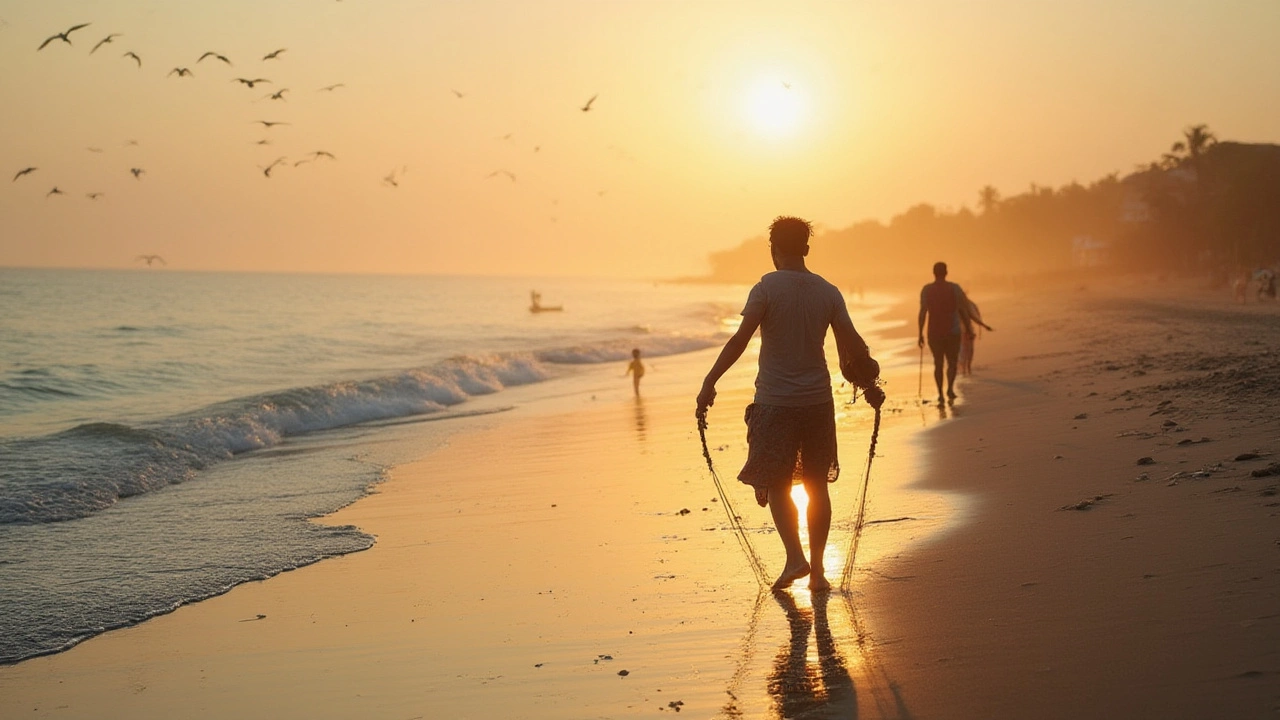
Essential Tips for Safe Sea Swimming in India
Trust me, the sun-drenched temptation is huge—especially after days traveling dusty city streets. But if you’re going in, a little planning can make all the difference. Here’s what every sea-lover needs to keep top of mind:
- Never swim where lifeguards forbid it or flags warn you out of the water. In many places, red flags mean seriously dangerous currents or pollution levels.
- If you’re not a strong swimmer, stick to shallow zones and never venture out alone. Even experienced locals rarely swim far from the shore because rip currents can be impossible to spot but terrifyingly powerful.
- Before leaping in, check the tidal schedule. Ask a lifeguard or a local fisherman—high tide can bring hidden risks, from strong backwash to sudden undercurrents.
- If you see local swimmers avoiding the surf—even on a beautiful day—follow their lead. There’s always a reason you can’t see from the beach.
- Don’t swim at night, during rough weather, or after drinking. Accidents skyrocket during festivals and holiday crowds, sometimes because “safety in numbers” feels falsely reassuring.
- Protect yourself from jellyfish and possible sea lice. Rash guards or even light T-shirts can prevent most uncomfortable stings, especially in the Andaman Islands or post-storm Goa.
- If stung by a jellyfish, don’t rub the area. Pour vinegar if you have it (or saltwater—never fresh water), and seek help if you feel dizzy, faint, or have trouble breathing.
- Stay hydrated and slather on reef-safe sunscreen—the sun here bakes, even when it’s cloudy.
- If pollution concerns you, stick to Blue Flag beaches and avoid swimming near drainage outlets or in the water right after heavy rain—downpours wash urban filth straight into the sea.
- Always keep an eye out for fishermen’s boats and nets. In less-developed areas, nets stretch far into shallow water and can trap swimmers unaware.
Many travelers forget: Indian coastal communities often avoid casual swimming in the deeper sea. For many, the ocean means livelihood and ritual far more than leisure. So don’t assume you’ll blend in if you jump in at every quiet bay—sometimes, what looks like perfect water hides powerful, deadly tides or a history of accidents. That “forbidden beach” sign isn’t just red tape.
Finally, for families: children should only swim in guarded, flagged zones, and always with close adult supervision—drowning incidents among kids are frequent along Indian beaches, largely because curiosity outweighs caution.
Is it safe to swim in the sea in India? Yes—at the right place, with the right preparation, and a big dash of respect for this unpredictable coast. Avoid the mistakes, read the signs, ask questions, and you’ll be rewarded with some of the world’s most memorable (and safe) swims—for your Insta feed, your travel memoir, or just your sun-parched soul.
